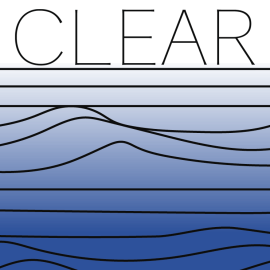Table of Contents
Project Background
This project seeks to address two areas that have remained separated for some time: Indigenous methodologies on one hand, and quantitative methodologies on the other. To date, most (though certainly not all) work on Indigenous and decolonial methodologies have focused on qualitative methods in the social sciences and humanities, to the point where it can seem as though quantitative methods are antithetical to Indigenization, decolonization, or even Indigenous knowledge broadly.
Despite this, there are increasing calls from scientists, Indigenous peoples, and members of the public to recognize the colonial legacies inherent in inherited Western science approaches to research, and to do science differently (Belhabib, 2021; Trios et al., 2021), including advocating for co-management of resources, the inclusion of Indigenous people in data analysis and decision making, and other collaborative models where quantitative literacy and even fluency is required for participation. Yet, those terms of literacy cannot be determined solely by Western models for equitable and just collaboration and decision-making. In an interview with Rodriguez-Lonebear, an Elder said, “Sovereignty as tribal nations was given to us by the Creator. It is sacred. Data to exercise our sovereignty is also sacred” (2016: 268). This isn’t usually how data management and quantitative research is approached. But it can be. It must be.
A crucial understanding of this project is that Indigenous sciences are not the opposite of Western methodologies, though they will differ in important ways. In Indigenous Statistics, a rare treatment of Indigenous quantitative methodologies, Water and Andersen write that, “while the dissimilarity of the standpoints will necessarily result in divergence between Western and Indigenous quantitative methodologies, this difference should not be conflated with the reverse: to differ from Western quantitative methodology is not the same as opposing it. Nor, as is the practice in much of the current discussion of Indigenous methodologies, should difference from colonizer settler methodologies sit at the core of what makes Indigenous methodology Indigenous” (2013: 73). They, and we, argue that while Indigenous methodologies are created and led by Indigenous peoples, they are open to use by a broad array of researchers.
What might this look like for quantitative research? Maggie Walter (Palawa), shows how her nayri kati (“good numbers”) approach changes research methods and outcomes on a project about Aboriginal and Torres Strait Islander participation in higher education (Walter and Andersen, 2013). Using nayri kati, Walter conceptualized the research topic in terms of Indigenous governance—an issue aligned with Indigenous movements (Smith, 1999)—so her research questions were about how well universities incorporate Aboriginal participation into their structures of governance, rather than deficit framing about why Aboriginal people fail to attend the university (2013: 95-6). Secondly, rather than aggregating data, she kept the data disaggregated by university to avoid “statistical decontextualizing…that distances data from the people and institutions whose actions, or lack of, contribute to creating the thing these data are measuring” (2013: 96). Instead, universities were ranked using publicly available data, including a comparison between Aboriginal student and staff enrolment and the Aboriginal population in the area. “By asking different questions [than her colleagues] of the same data, the problematic of low and only minimally increasing Indigenous participation in the higher education sector was situated within the individual university and the sector, not with Aboriginal staff or centers” (2013: 98). She writes that, “as expected, the first response by a number of university hierarchies was to question our methods, a response quickly blunted by reference to our data sources and theoretical frame. More importantly, [the report has] been widely picked up by Indigenous higher education leaders and others” (2013: 98-99). Thus, it is not just that tools change through Indigenous quantitative methodology: findings also change.
Project Activities
The Indigenous Quantaitive Methods project currently involves:
- A reading group of mainly Indigenous researchers who use quantitative methods in their research, as well as some non-Indigenous CLEAR members who are working collaboratively with Indigenous data
- A public Zotero library of texts and sources about Indigenous quantitative methods specifically
- A set of interviews with key Indigenous quantitative researchers about their methodological practices and how they align with Indigenous cosmologies, ethics, and community needs. These interviews will be brought together with existing published literature for a published overview of the state of Indigenous quantitative methods in Canada and the United States
- The project has an open PhD position (see “joining CLEAR”)
This project is funded by an SSHRC Insight grant, an NSERC Discovery Horizon grant, Memorial University, and the Killam Foundation.
